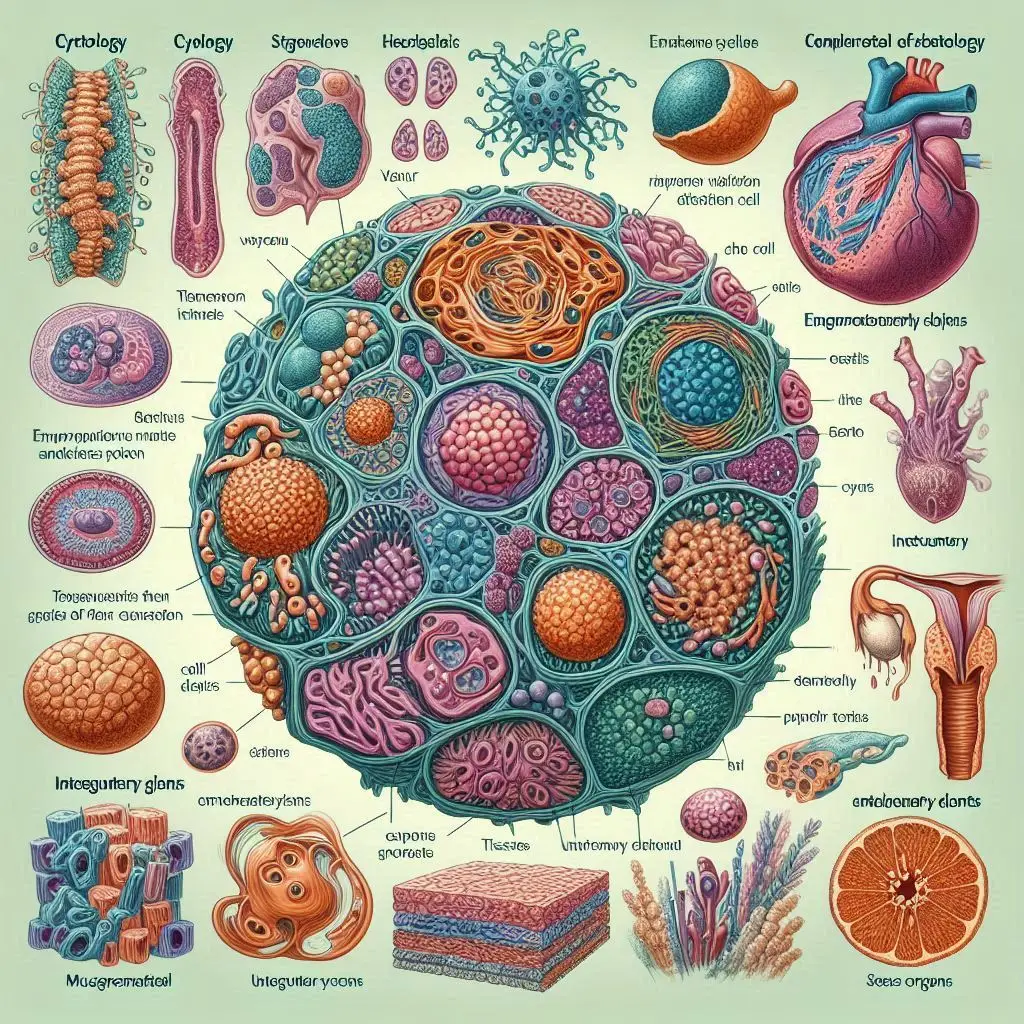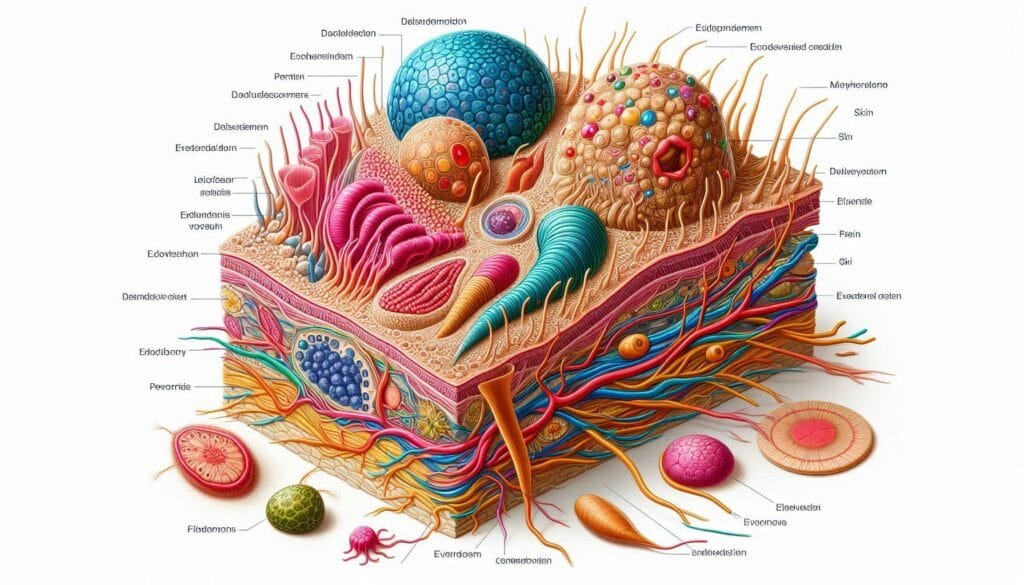Epithelial Tissue

Introduction to Epithelial Tissue
Epithelial tissue, commonly known as epithelium, is a crucial component of the human body. This specialized tissue covers surfaces, lines cavities, and forms glands. Epithelial tissue plays multiple roles, including protection, absorption, secretion, and sensation. Understanding epithelial tissue is essential for grasping how our bodies function effectively.
What Is Epithelial Tissue?
It consists of closely packed cells with minimal extracellular matrix. The cells are arranged in sheets that can be single-layered (simple) or multi-layered (stratified). This arrangement allows epithelial tissue to perform its various functions effectively.
Importance of Epithelial Tissue
It is vital for maintaining homeostasis. It protects underlying structures from damage and pathogens. Additionally, it facilitates nutrient absorption and waste elimination. For more information on the importance of epithelial tissue, check out this article from the National Center for Biotechnology Information.
Structure of Epithelial Tissue
Epithelial tissue has unique structural features that distinguish it from other tissue types.
Cellularity
Being highly cellular, They consist mainly of tightly packed cells with little space between them. This arrangement forms a barrier that protects underlying tissues.
Polarity
Having polarity, They possess an apical surface that faces the external environment or an internal cavity and a basal surface that attaches to underlying connective tissue. This polarity is crucial for their function.
Avascularity
Epithelial tissues are avascular, meaning they lack blood vessels. Instead, they receive nutrients through diffusion from nearby connective tissues. This characteristic influences how quickly epithelial tissues can heal after injury.
Regeneration
Epithelial cells have a high capacity for regeneration. They can quickly replace damaged or dead cells. This ability is vital in areas exposed to wear and tear, such as the skin and lining of the digestive tract.
Specialized Structures in Epithelial Tissue
Epithelial cells may have specialized structures that enhance their functions:
- Cilia: These hair-like projections help move substances across the epithelial surface. Cilia are found in the respiratory tract, where they help clear mucus and debris.
- Microvilli: These tiny finger-like extensions increase surface area for absorption. Microvilli are abundant in intestinal epithelial cells, facilitating nutrient uptake.
For more on specialized structures in epithelial tissues, refer to this resource from the University of California.
Types of Epithelial Tissue
Can be classified based on cell shape and layering.
Classification by Cell Shape
- Squamous Epithelium: These flat cells are thin and allow for easy diffusion of substances. They line blood vessels (endothelium) and alveoli in the lungs.
- Cuboidal Epithelium: Cube-shaped cells that are involved in secretion and absorption. They are found in kidney tubules and glandular ducts.
- Columnar Epithelium: Tall, column-like cells that often have microvilli or cilia. They line the digestive tract and respiratory passages.
Classification by Layering
- Simple Epithelium: A single layer of cells that facilitates absorption, secretion, and filtration.
- Simple Squamous Epithelium: Found in areas requiring rapid diffusion (e.g., lungs).
- Simple Cuboidal Epithelium: Typically found in glands and kidney tubules.
- Simple Columnar Epithelium: Lines the stomach and intestines; often contains goblet cells that secrete mucus.
- Stratified Epithelium: Composed of multiple layers of cells; it provides protection against abrasion.
- Stratified Squamous Epithelium: Found in areas subject to friction, such as skin and the lining of the mouth.
- Stratified Cuboidal Epithelium: Rare; found in some glandular ducts.
- Stratified Columnar Epithelium: Also rare; found in parts of the male urethra.
- Pseudostratified Epithelium: Appears layered due to varying cell heights but is a single layer. It is commonly found in the respiratory tract.
For a detailed overview of epithelial types, visit this resource from TeachMeAnatomy.
Functions of Epithelial Tissue
Protection
One primary role of epithelial tissue is protection. It acts as a barrier against mechanical injury, pathogens, and chemical exposure. For instance, stratified squamous epithelium protects underlying tissues from abrasion and infection.
Absorption
Epithelial tissues facilitate absorption by increasing surface area through microvilli. In the intestines, simple columnar epithelium absorbs nutrients efficiently due to its structure.
Secretion
Many of them produce and secrete substances such as enzymes, hormones, and mucus. Glandular epithelium forms exocrine glands that release secretions onto surfaces or into cavities.
Sensation
Epithelial tissues contain sensory nerve endings that contribute to our sense of touch and other sensations. Specialized epithelial cells can detect stimuli like temperature and pressure.
For more information on epithelial functions, check out this article from Khan Academy.
Clinical Significance of Epithelial Tissue
Cancer
Epithelial tissues are common sites for cancer development due to their rapid cell division rates. Carcinomas are cancers arising from epithelial cells. Early detection through screening can improve outcomes significantly.
Infections
Infections often target epithelial tissues since they serve as barriers against pathogens. For example, respiratory infections affect the ciliated epithelium in the airways.
Wound Healing
The regenerative capacity of epithelial tissue plays a vital role in wound healing. When skin is injured, epithelial cells rapidly proliferate to cover the wound site.
For insights into cancer related to epithelial tissues, refer to this National Cancer Institute article.
Conclusion
Epithelial tissue is a vital component of human anatomy with diverse functions ranging from protection to absorption and secretion. Its unique structure allows it to perform these roles effectively across various organ systems.
For more pearls of Vets Wisdom:
https://wiseias.com/hormonal-control-mammary-development/






Responses